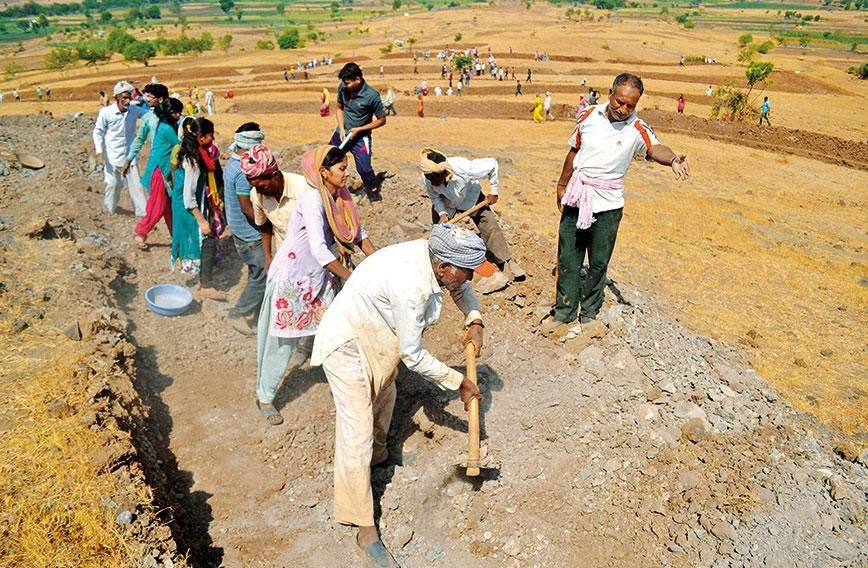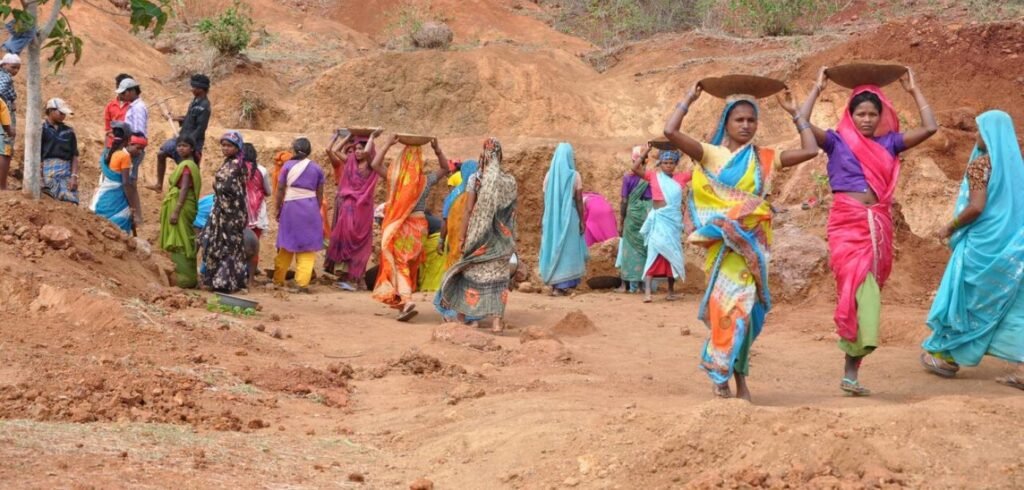India’s largest anti-poverty initiative, the Mahatma Gandhi National Rural Employment Guarantee Act (NREGA), faces growing challenges amid government reforms that have sparked widespread protests. Enacted in 2005, NREGA promises rural households up to 100 days of wage employment each year, offering a critical safety net to millions of marginalized workers. However, recent technological changes and reduced funding have created significant barriers for those relying on the program for economic security.
The Shift to Digital: New Barriers for Rural Workers
In early 2023, the Indian government introduced a digital attendance system, requiring NREGA workers to use a mobile app to record their work hours and receive payments. This abrupt move sparked concerns about its feasibility, particularly in rural areas with limited access to technology and internet connectivity. Workers must now upload two photographs each day—geotagged and time-stamped—to verify their presence at job sites. Many rural areas, however, face persistent digital divides, with limited smartphone ownership and unreliable internet access.
For workers like Ram Beti, from the state of Uttar Pradesh, the new system has brought additional hardships. “Sometimes, even after working for 12 days, only five days are recorded,” she explains, highlighting the technical glitches and irregularities that often result in workers not receiving full payment for their labor. The digital system, instead of improving transparency, has created more bureaucratic hurdles, leaving workers vulnerable to missed wages.
A Struggling Welfare Program Under Attack
Since its inception, NREGA has been hailed as a groundbreaking social welfare initiative, especially in providing employment opportunities to rural women who make up a significant portion of the workforce. Yet, the Modi government has consistently reduced its budget, undermining the program’s effectiveness. For the 2023 financial year, funding for NREGA was slashed by 33%, limiting the number of available jobs and delaying wage payments across several states.
This budget reduction, coupled with the complexities of the digital system, has led to a sharp decline in the number of people benefiting from the program. Economists and activists argue that these changes are part of a broader effort by the government to dismantle NREGA gradually. Jean Drèze, a prominent economist, criticized the recent reforms as disastrous for workers, noting that the introduction of complex payment systems has further excluded the very individuals NREGA is designed to protect.

The Broader Impact on Rural India
NREGA’s digital transformation has had significant consequences beyond the immediate issue of unpaid wages. It reflects a deeper shift in India’s welfare policies, moving away from a rights-based approach to one that places workers at the mercy of arbitrary government decisions. Under the Modi administration, welfare programs have been subject to increasing bureaucratic control and funding cuts, placing the burden of proof on the most vulnerable segments of society.
The rural workforce, which has long struggled with poverty, inadequate infrastructure, and economic instability, now faces an additional layer of exclusion through digitization. In areas where access to electricity, smartphones, and internet connections remains scarce, many NREGA workers are unable to comply with the new requirements, leading to widespread disenfranchisement. A 2022 Oxfam study revealed that 70% of India’s population had poor or no connectivity to digital services, further complicating the digital rollout.

Resistance and the Fight to Preserve NREGA
Faced with these mounting challenges, NREGA workers have taken to the streets in protest, demanding an end to the digital attendance system and calling for the restoration of the program’s full funding. Protests have erupted in several states, including West Bengal, where workers have long complained about delays in wage disbursements. Labor unions and civil society organizations argue that the government’s reforms are designed to dismantle the program under the guise of modernization, effectively excluding millions of rural workers from the benefits they are entitled to receive.
The rural workers’ movement is growing in strength, with demands for fair treatment and respect for their rights. This movement echoes previous mass protests in India, such as the farmers’ movement that successfully challenged the government’s agricultural reforms. Many see the defense of NREGA as part of a broader struggle to preserve social welfare programs that support India’s most vulnerable populations.

Conclusion: A Critical Juncture for India’s Welfare State
As of mid-2023, the future of NREGA hangs in the balance. The digital reforms, coupled with budget cuts, threaten to dismantle one of the world’s largest social welfare initiatives. The program’s survival depends on the ability of workers, unions, and civil society to push back against these changes and demand a return to the program’s original rights-based framework.
India’s rural workforce remains resilient in the face of these challenges, but the government’s continued push for digitalization and austerity threatens to further marginalize millions. The struggle to preserve NREGA is not just about employment; it is about defending the right of rural workers to live with dignity and economic security. The coming months will be critical in determining whether India can sustain its commitment to one of its most ambitious social programs or if NREGA will become another casualty of neoliberal reforms.

